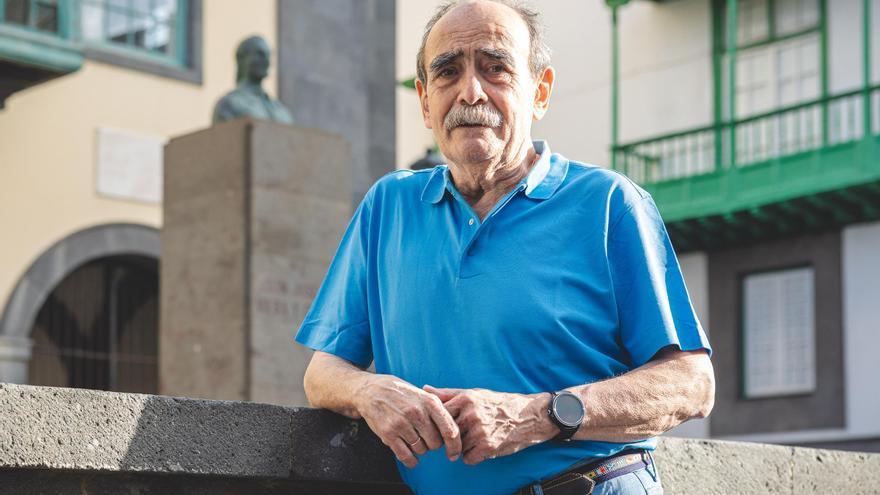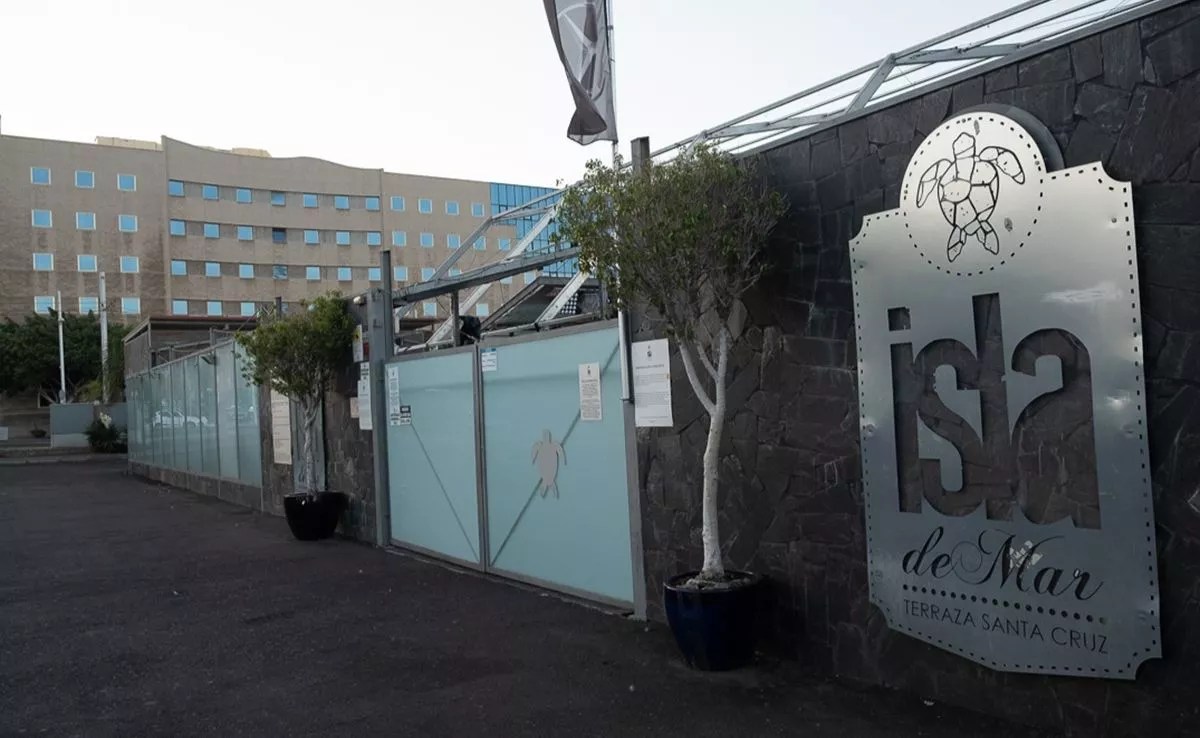
Asturian born and bred, at 70 years old, Celestino García de la Noceda is a leading figure in geothermal energy. On Wednesday, he took part in the conference ‘New Energy Vectors’, organized by the Royal Economic Society of Friends of the Country of Gran Canaria, with the collaboration of the Association for Energy Transition and the support of Canaluz. García de la Noceda highlights the great opportunities for geothermal energy in the Islands.
[–>
You have mentioned on different occasions that geothermal energy is the great unknown and that the Canary Islands have many possibilities. I read that in 2015. What is the current situation in the Canary Islands?
We are in a very good moment because there has been a call for projects launched by the Ministry for the Ecological Transition through the Institute for Diversification and Saving of Energy (IDAE) with funds from Next Generation, but there have been many difficulties in getting them off the ground. Nevertheless, there are high expectations because it affects Gran Canaria, Tenerife, and La Palma. A project could not be carried out in Lanzarote, but work is still ongoing on the issue.
But what is happening that this energy source, after so many studies, has not been developed?
The issue with geothermal energy is that it involves mining research. The subsurface needs to be explored to understand its composition and characteristics. This process takes time, on one hand, even though we already have many studies, and it requires investment. There is a significant investment required for drilling. Geothermal energy is extracted through highly expensive boreholes. That’s why the boost provided by the Next Generation funds is necessary to help mitigate this factor hindering progress. However, geothermal energy has a significant advantage.
What are the advantages of geothermal energy?
Geothermal energy is available 24 hours a day, 365 days a year, and that is one of the significant challenges facing most renewable energies. We have a base energy source that can be easily regulated, meaning we can increase its power simply by opening a valve and produce during peak demand periods.
Why haven’t there been structures in so many years?
We have been working on the matter, but what is needed is an entity to undertake a project in terms of investment. And what companies can carry this out? Sometimes it’s public entities or private entities, and there are few private entities willing to delve into geothermal energy, or at least there were very few, because in recent times we have seen a shift in this mindset, with investors interested in investing. This has led us to expand our work within the Spanish Technological and Innovation Platform in Geothermal Energy into another branch called Geoenergy, which is an entity to bring together the productive sector, that is, it will be dedicated to companies and, primarily, to policies and the market, to be able to negotiate with the authorities all the requirements that the sector demands in order to obtain suitable tariffs. This is one of the difficulties that companies wanting to enter the sector usually point out, that there is a lack of pricing policy, of aids, to guarantee that our investment will be profitable in the medium to long term.
Are these projects profitable?
They are completely profitable. In fact, geothermal energy is one of the most lucrative renewable energies. These investments are amortized in a very short time. We could be talking about less than 10 years in most cases.
Can geothermal energy be used in tourism?
There is deep and shallow geothermal energy. Shallow geothermal energy has already seen widespread development, and even in the Canary Islands, there are hotels that use geothermal heating and cooling, most of them in coastal areas, using underground water in different islands. This is already in place, it is not widely known. For example, the Lanzarote Island Council has its building climate controlled with geothermal energy. This type of geothermal energy is used for heating or cooling.
But deep geothermal energy remains stagnant.
Deep geothermal energy, primarily envisioned for electricity production due to the high interest, has potential on different islands. We are thinking of large-scale production, like in other oceanic islands, in the Azores, or as it is in Hawaii. We have possibilities for that, as we are aware that there are geological and thermal conditions for these deposits to exist.
At what depth would the drilling be?
It depends on the locations. In the island where drilling would probably be deepest, La Palma, which has a more rugged topography and would actually require deeper boreholes to reach the target. We are talking about 3,000, 4,000 meters there, and in Tenerife, we are talking about 2,000, 3,000 meters. In Gran Canaria, depths are similar, 2,000, 2,500, 3,000 meters. In Lanzarote, it is possible.
No more than smaller depths, not even needing to go beyond 2,000 metres, but well all of this always depends on the companies that have submitted their projects.
Do these drillings not cause any environmental damage?
It should not pose any difficulty. The drillings last for a very limited time, just a few months. We’re always talking about onshore. Obviously, we have to respect it, and in that sense, the majority of the territory in the Canary Islands is protected, by various protection measures, but in any case, we can perfectly drill and achieve success.
What is the total funding for these projects?
Right now, there are over 100 million Euros at stake in this matter in the Canary Islands. These are European funds that will help cover a percentage of the expenses for that research. There are several projects that have been submitted to the call for proposals. Private companies and public institutions are also collaborating, such as the Cabildo de Gran Canaria, and the same goes for La Palma. That is to say, of the four islands with the greatest potential, La Palma, Tenerife, and Gran Canaria, initially have projects underway. Another project is also currently being managed in Lanzarote. The prospects are very favourable.
What would it mean for the Canary Islands to develop this geothermal potential?
In islands like La Palma or Lanzarote and Fuerteventura, which are connected in terms of electricity, it could mean almost 100% of their electrical demand, meaning at this moment their demand could be completely met. In the case of Tenerife, it could be a lower percentage, probably 10 or 15% initially. In the case of Gran Canaria, it will possibly be slightly lower, but if we can reduce the burden we have in the Canary Islands from fossil fuels with energies that are in our subsoil and are our property, we cannot say no.
When do you think we could see some results?
The first results could be seen when the drillings are done, and basically, the process may face difficulties with environmental permits, although the EU has requested that States facilitate the processing of projects of this nature. But once the drillings are done, we could have results in less than a year. I advocate for the Government of the Canary Islands to also make its commitment to geothermal energy as it has with other renewables and support us and expedite those procedures, with rigour, of course.
Is the Canary Islands an optimal region for geothermal energy, being volcanic?
The Canary Islands are more than a favourable territory. It is volcanic, we have manifestations of that thermalism, and we have very clear data. Are there other areas on the Peninsula? Yes, but the Canary Islands are the main territory in Spain to develop deep geothermal energy for electricity production.
















